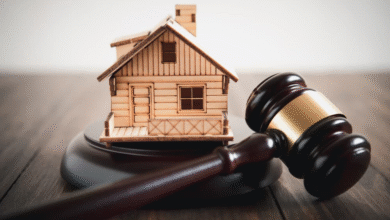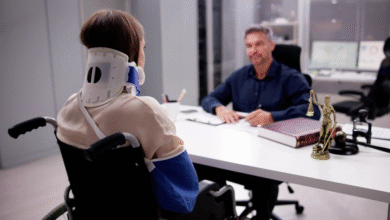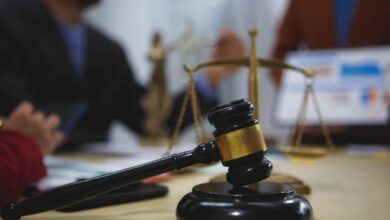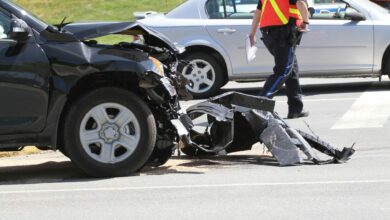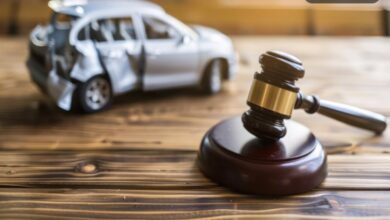Rear-End Collisions: Who’s at Fault and Why It Matters
Learn who’s typically at fault in rear-end collisions, why liability matters, and how fault impacts insurance claims and legal outcomes.

Key Takeaways:
- Fault is usually—but not always—assigned to the rear driver. However, proving fault in rear end collisions depends on specific circumstances and evidence.
- Injuries like whiplash and spinal damage can be serious, even in low-speed crashes. Always seek medical attention and legal advice after a rear-end accident.
- A rear end collision lawyer can help you protect your rights, negotiate with insurance companies, and pursue the maximum settlement possible for your injuries and damages.
Rear-end collisions are some of the most frequent accidents on the road, often occurring in everyday traffic situations—from red lights and stop signs to sudden slowdowns on busy highways. While they may seem straightforward, these accidents can have serious legal and financial consequences, especially when injuries are involved. Understanding who is at fault is critical in determining liability, seeking compensation, and pursuing justice.
If you’ve been injured in a rear-end accident, hiring an experienced rear-end collision lawyer can make a world of difference. Legal professionals can guide you through the complex claim process, protect your rights, and help you secure the compensation you deserve.
Understanding Rear-End Collisions
Rear-end collisions are among the most common types of car accidents in the United States. They occur when a vehicle crashes into the one in front of it, usually because the trailing driver fails to stop in time. These accidents range from low-speed fender benders in traffic to high-speed crashes on highways, and they can lead to significant injuries and costly vehicle damage.
While many people assume these incidents are minor, even a slow rear end auto accident can cause serious issues like whiplash, back injuries, or chronic pain. Understanding how and why rear-end crashes happen is crucial—not only for prevention but also for knowing what steps to take if you’re involved in one.
Before exploring who is at fault in a rear-end collision, let’s break down the most common reasons they occur.
Common Causes of Rear-End Accidents
Rear-end collisions typically occur when one vehicle crashes into the back of another. While they are often considered preventable, they still account for nearly 29% of all car crashes, according to the National Highway Traffic Safety Administration (NHTSA).

Types of Rear-End Collisions
Rear-end collisions can vary in severity depending on speed and impact angle. Broadly, they fall into two categories:
- Low-Speed Impacts: Often seen in urban traffic or parking lots. These may seem minor but can still result in significant whiplash or soft tissue injuries. A low impact rear end accident settlement may still be substantial, especially when medical costs or lost wages are involved.
- High-Speed Collisions: These can be devastating, especially on highways. The impact can push the lead vehicle into another car, creating chain-reaction crashes. Injuries are usually more severe and require long-term treatment or rehabilitation.
Common Injuries Resulting from Rear-End Accidents
Rear-end accidents can cause a range of injuries, some of which may not show symptoms right away. Common injuries include:
- Whiplash: Caused by a sudden jolt to the neck. This is one of the most common rear end crash neck injuries.
- Back and Spinal Cord Injuries: Especially in high-speed collisions, the force can damage discs or vertebrae.
- Concussions or Head Injuries: A sudden impact can cause the head to hit the steering wheel or window.
- Shoulder, Arm, and Wrist Injuries: Common when drivers brace for impact.
- Soft Tissue Injuries and Internal Trauma: Can lead to long-term complications if not treated properly.
Tip: If you’ve suffered any of these injuries, it’s important to speak with a personal injury lawyer for rear end collision cases to explore your legal options.
Who Is at Fault in a Rear-End Collision?
Fault is the foundation of any car accident case, and rear-end collisions are no exception. While these types of crashes might appear straightforward—especially since the trailing driver is often blamed—the reality is that each accident has unique circumstances.
Understanding who is legally responsible is essential when filing an insurance claim, pursuing a car accident settlement, or building a personal injury lawsuit. Whether you’re the rear driver or the one hit from behind, don’t assume liability without a thorough investigation. The facts matter, and so does the evidence.
Let’s explore how fault is typically determined in rear-end accidents and why exceptions do exist.
Presumption of Fault and Legal Standards
In general, the rear driver is presumed to be at fault for a rear-end collision. This presumption exists because traffic laws require drivers to maintain a safe following distance and remain alert to changes in road conditions.
However, this presumption is not absolute and can be challenged under certain circumstances. That’s why understanding the specifics of your case is important—especially when navigating fault and liability.
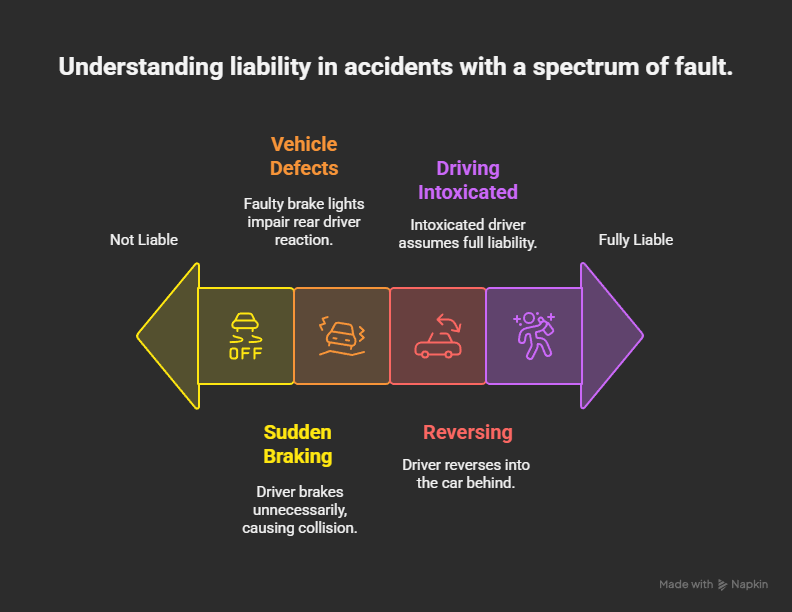
Learn more about proving fault in rear end collisions by reviewing our guide to evidence and liability.
Role of Police Reports and Traffic Laws
Police reports carry weight when determining who is at fault. Officers usually provide an objective description of the scene and may even cite one of the drivers. This documentation is especially important when:
- Filing an insurance claim
- Disputing fault
- Supporting a personal injury lawsuit
A rear-end accident attorney will often use police reports, dashcam footage, and witness statements to build a case.
The Legal Process After a Rear-End Collision
The aftermath of a rear-end accident can be overwhelming. Between dealing with physical injuries, emotional distress, and mounting bills, it’s easy to feel lost. But taking the right legal steps—immediately and systematically—can protect your health, finances, and ability to pursue compensation later on.
The legal process involves more than just filing an insurance claim. It includes gathering crucial evidence, determining who is at fault in the rear end collision, complying with local laws, and understanding the limitations on how long you have to file a claim (known as the statute of limitations).
Whether it’s a low-speed rear end accident with minor damage or a high-impact crash causing severe injuries, every decision you make from the moment of the collision can affect the outcome of your case. That’s why it’s highly recommended to work with a rear end collision lawyer early in the process—before you speak to insurance adjusters or agree to any settlements.
Before diving into the paperwork and phone calls, here’s what you should do at the scene to build a strong foundation for your case.
What to Do Immediately After a Rear-End Crash
Knowing the steps after a car accident is critical. Here’s what to do:
- Check for injuries and call emergency services immediately.
- Move your vehicle to a safe location if possible.
- Document the scene with photographs and video evidence.
- Exchange information with the other driver (insurance, registration, contact info).
- Talk to witnesses and get their contact details.
Why Medical Attention Is Crucial
Not all injuries are visible immediately. A doctor’s diagnosis can be the difference between receiving full compensation and having your claim denied.
- Medical records support your rear end collision claim process
- Delayed treatment can be used by insurance companies to undermine your case
For more advice on what to do after an accident, check out our step-by-step legal guide.
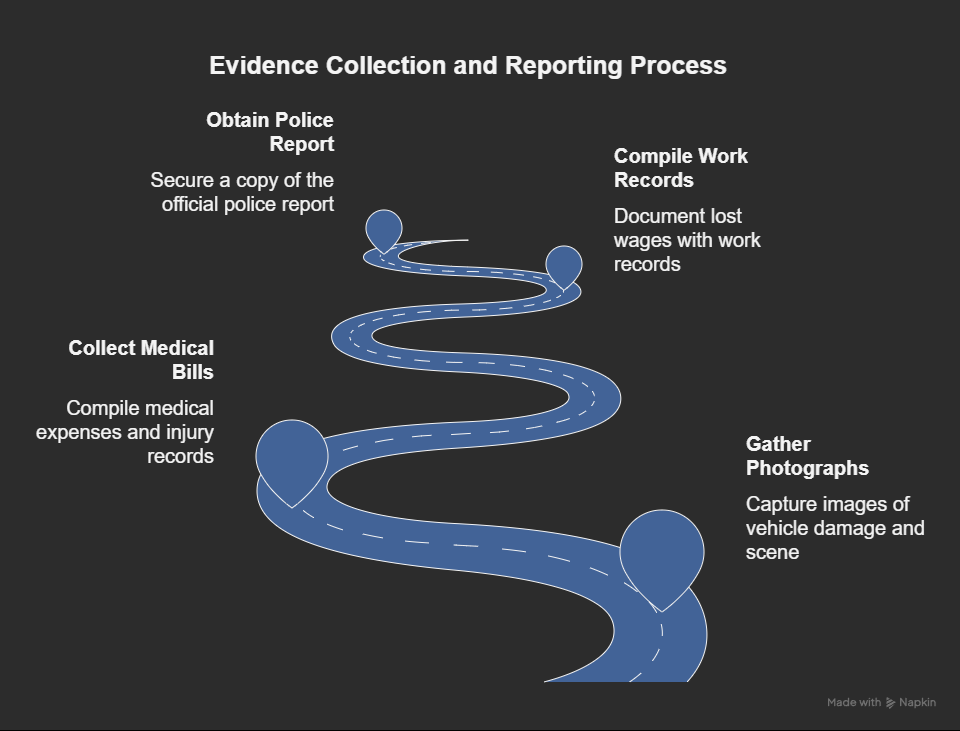
All of this evidence strengthens your claim and can increase the settlement for rear end accident injury cases.
Why Fault Matters in Rear-End Accidents
Establishing fault in a rear-end collision isn’t just about assigning blame—it directly affects your ability to recover compensation for injuries, property damage, and emotional suffering. The legal and financial consequences of being found at fault can be significant, especially in states where comparative negligence or contributory negligence laws apply.
The aftermath of a rear end car accident often brings confusion, stress, and pressure from insurance companies looking to close claims quickly. That’s why knowing your rights and understanding rear end crash liability is essential. If you’re unsure who caused the accident or if you’re being unfairly blamed, consult a rear end collision lawyer to evaluate your case.
Fault influences everything from whether your insurance premiums increase to whether you can even file a lawsuit. It also impacts whether your rear-end collision claim process will go smoothly or become contested.
So how does fault actually influence the steps that follow a crash? Let’s break it down.
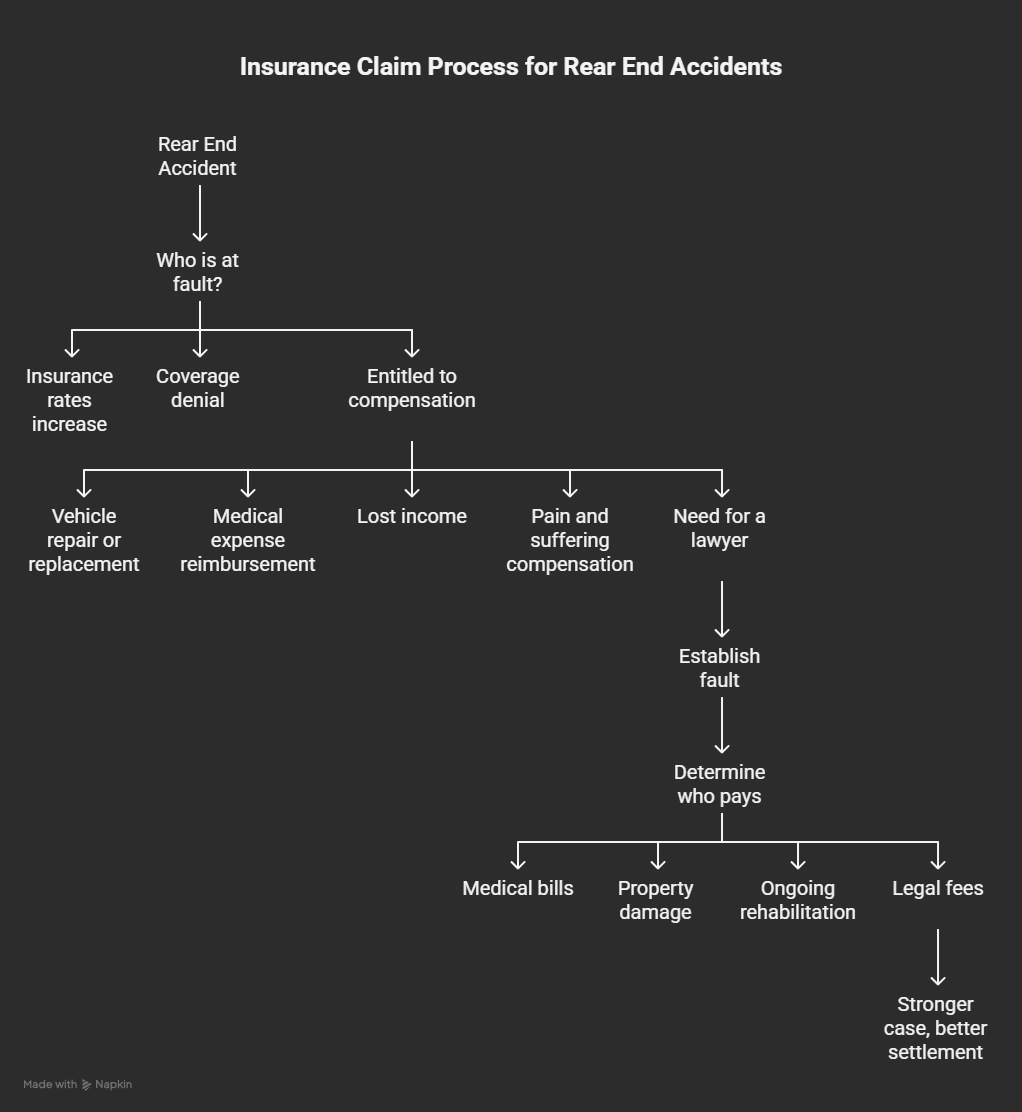
How Comparative Negligence Affects Compensation
In comparative negligence states, both parties can share fault. Here’s how it works:
- You’re awarded $100,000 in damages
- You’re found 25% at fault
- You receive $75,000 (adjusted for your share of liability)
Understanding how this applies in your jurisdiction is something your auto accident attorney will help you navigate.
Find out more about comparative negligence laws here.
Conclusion: Take Legal Action with Confidence
Rear-end collisions can seem simple on the surface—but legally, they’re anything but. From determining who is at fault in a rear end collision to handling insurance disputes, the aftermath of a crash is filled with opportunities for error. Acting quickly, collecting the right evidence, and hiring a skilled rear end collision lawyer can drastically improve your outcome.
Whether you suffered a minor whiplash injury or are facing long-term recovery from a severe spinal condition, don’t try to fight your case alone. Insurance companies have teams of adjusters and lawyers focused on minimizing what they pay. You need someone in your corner who understands rear end crash liability, local traffic laws, and how to navigate complex car accident insurance claims.
If you’re unsure about your legal rights or whether you can seek compensation, schedule a consultation with a qualified rear-end accident attorney. They’ll review your case, estimate your damages, and guide you through the rear-end collision claim process—from filing paperwork to negotiating the highest possible rear-end accident settlement.
Need help right now? LawyersBay.com offers detailed resources, attorney directories, and free legal guides to get you started on the right path.


